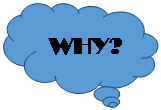May, 2019 Monthly Reflection
The Power of Why?: Addressing the Root Causes of Human Trafficking
by Ann Scholz, SSND, Associate Director for Social Mission, LCWR
 There is an old, and perhaps over-used story, about a village on the edge of a river and babies. Perhaps you’ve heard the parable of the “Baby in the River.” It goes something like this:
There is an old, and perhaps over-used story, about a village on the edge of a river and babies. Perhaps you’ve heard the parable of the “Baby in the River.” It goes something like this:
Once upon a time, there was a small village on the edge of a river. The people there were good and life was good. One day a villager noticed a baby floating down the river. She quickly swam out to save the baby. The next day this same villager noticed two babies in the river. She called for help, and both babies were saved. The following day there were four babies and then eight, then more, and more, and on and on it went.
The villagers got organized. They set up teams to rescue the babies and were soon working 24-7. Each day the number of babies floating down the river increased. The rescue squads were now saving many children each day. While not all the babies could be saved, the villagers felt they were doing well to save as many as they could. They set up a field hospital to care for the babies and collected diapers and clothing. They recruited foster families to care for the children and arranged for their education.
Indeed, the villagers were quite proud of their efforts. And life in the village went on and the villagers went on rescuing as many babies as they could.
One day, someone raised the question, “Where are all these babies coming from? Let’s send a team upstream to find-out why all of these babies are floating downstream!”
The community elders countered: “And if we go upstream who will manage the rescue operations? We need every concerned person here!”
“But don’t you see,” cried the one lone voice,” if we find out who is throwing them in, we can stop the problem and no babies will drown! By going up-stream we can eliminate the cause of the problem!” “It is too risky,” said the village elders. And so the numbers of babies found floating in the river increased daily. Those saved increased, but those who drown increased even more.
The moral of the story seems pretty obvious: We need to do our part to rescue babies found floating down the river. But we also need to ask why they’re being thrown into the river and what we can do about that!
Those who are committed to ending every form of slavery must also ask “Why?” Why are so many women and girls, and boys and men, still being bought and sold for sex, labor, and organ transplant? Unless and until we tackle the “why” question, we will make only limited progress in preventing human trafficking.
“Prevention” is, and has been, one of the 4 “Ps” in the fundamental international frameworkused by governments and non-governmental organizations to combat contemporary forms of slavery. Historically, prevention efforts focused on public awareness campaigns to educate communities in source and destination countries about human trafficking so that they could identify victims and warn vulnerable populations.
Today, prevention has grown to include other cross-cutting efforts such as: ensuring that labor laws protect all classes of workers; providing robust labor enforcement; addressing vulnerabilities such as birth registrations and identification; constructing labor recruitment programs that protect workers from exploitation; strengthening partnerships between law enforcement, government, and non-governmental organizations; emphasizing effective policy implementation with stronger enforcement, better reporting, and government-endorsed business standards; monitoring product supply chains; and reducing demand for commercial sex.
The expansion of “prevention” strategies is laudable. However, unless we address the underlying socio-economic context that gives rise to human trafficking; until we better understand the changing context of race, gender, politics, labor, and migration in this rapidly globalizing world, we cannot dismantle the cultural superstructure which supports the trafficking of human beings. If we hope to end human trafficking, then we must be willing to examine the power dynamics that allow some to enslave others. If we hope to end exploitation, then we must be willing to disassemble hierarchies of every sort. If we hope to establish justice and equality, then we must continually ask “why?”
Category: Arts and Creative Activism, Monthly Reflections, The Alliance to End Human Trafficking

